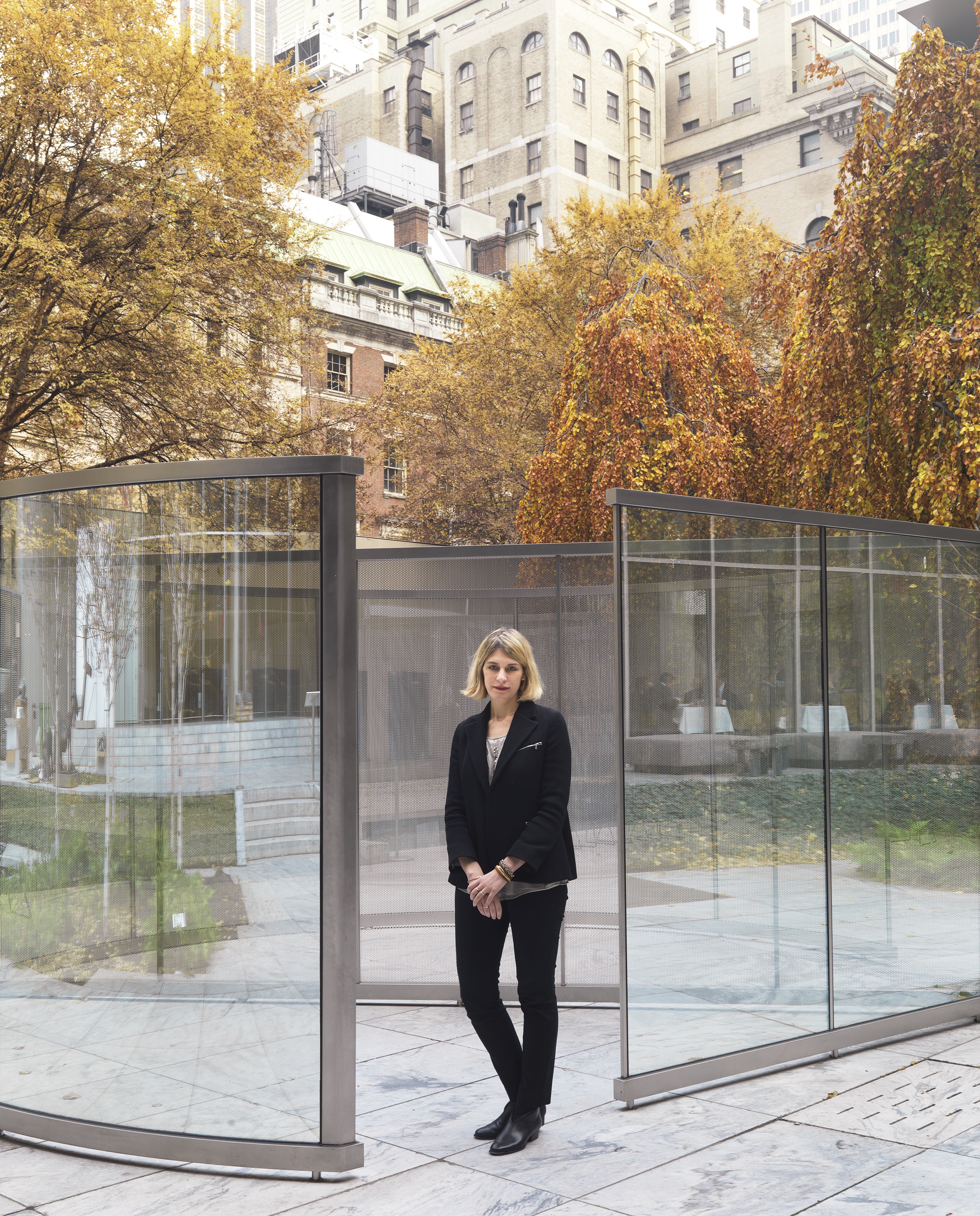
Forging new ground as a curator in the Museum of Modern Art’s department of media and performance art—formed in 2006, the youngest department at the New York art institution—Ana Janevski has been preparing herself for the challenge her whole life.
Born in 1976 in Belgrade, the capital of the former Socialist Republic of Yugoslavia, to a father who was a diplomat and an art historian mother who took her to museums and galleries from childhood, Janevski spent her formative years in Italy. She first became aware of performance art at the beginning of high school, through a book on alternative culture in Yugoslavia and the use of the body in art—particularly the work of Tomislav Gotovac, Sanja Iveković and Marina Abramović.
Janevski studied political science, literature and art history at La Sapienza, the university in Rome. “For me, everything is related: literature is related to history and related to geography and related to art,” she recently shared over lunch at MoMA’s café. “That was always how I’ve always approached or understood culture; I cannot disconnect those fields one from another.”
Joining the museum in 2011—after furthering her education in Paris, and helping to build the Museum of Modern Art in Warsaw from scratch over a four-year stint there—Janevski quickly became an integral player in defining the scope of the new curatorial department. Even though she had only previously visited MoMA once, she declared, “There are some places that you feel as though you’ve known for a long time because you’re familiar with them from mediated sources—like visiting the Eiffel Tower for the first time and having the impression of already having been there. That was the kind of feeling I had with MoMA.”
Contributing to the museum’s collection and programming in a variety of ways, Janevski has organized dance projects with Boris Charmatz, Yvonne Rainer, Jérôme Bel and Anne Teresa De Keersmaeker, and has co-curated performance projects featuring Simone Forti, Charlemagne Palestine, James Lee Byars and Martha Rosler.
Rethinking the role of live art in the collection, she led the acquisition of Simone Forti’s Dance Constructions (1961), which are some of the most requested works in the department’s collection. She has also organized performances, exhibitions and lecture presentations by Ei Arakawa, Paulina Olowska, David Maljković, Lawrence Abu Hamdan, Akram Zaatari and My Barbarian.
Janevski was also deeply involved with MoMA’s Artist Research Residency, supported by the Annenberg Foundation, that has helped fund the creation of work by Ralph Lemon, Andrea Geyer, Adam Pendleton and Trajal Harrell, whose dance performance Hoochie Koochie premiered at London’s Barbican Art Gallery last summer.
Two of Janevski’s most intriguing projects are Jérôme Bel’s creation of the MoMA Dance Company and Yvonne Rainer’s performance contending with themes of aging and mortality. For his Artist’s Choice exhibition, Bel became more interested in the museum’s staff than the objects in the collection and put the workers to task as part of a performing troupe. Rainer’s dance incorporated Henri Rousseau’s 1897 painting The Sleeping Gypsy, which made a lasting impression on the choreographer when she first visited MoMA in 1956.
Up next this fall is a major exhibition celebrating the legacy of Judson Dance Theater, an avant-garde collective of dancers, composers and visual artists who performed at the Judson Memorial Church in New York’s Greenwich Village between 1962 and 1964, that she’s co-organizing with her department’s associate curator Thomas J. Lax and curatorial assistant Martha Joseph. Influenced by the Bauhaus, the artists—including Trisha Brown, Steve Paxton, Robert Rauschenberg and Carolee Schneemann, among others— employed improvisation and everyday gestures in their performances.
“The amount of time that the museum visitor spends in front of an artwork is nothing like the amount of time they will spend in front of a performance,” Janevski proclaimed. That explains why MoMA’s expansion, which will expand its gallery space by 50,000 square feet and is scheduled for completion in 2019, will feature a dedicated space in the collection galleries for performance.
“This dedicated space will be a space for commissions, a space for live performance, a space for sound, for music, for spoken word—and it can relate to the collection,” asserted Janevski. “Basically it takes performance off the stage, which is just what the artists working at Judson did.”




